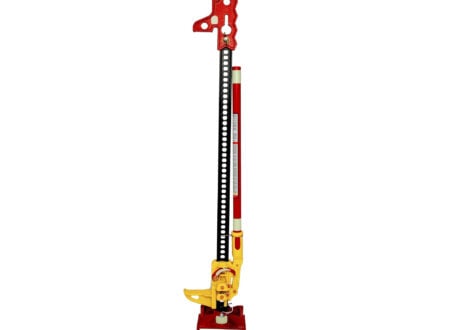This is an original Ensambladora Automotriz Land Rover Series 2A, it was built in Costa Rica in-period from complete knock-down (CKD) kits supplied by ship from England.
Costa Rica would become home to countless thousands of Land Rovers starting in 1949 thanks almost entirely to a young couple who began importing them one by one before eventually setting up their own factory to assemble them en masse.
Fast Facts – The Ensambladora Automotriz Series 2A
- In a handful of foreign markets, some Land Rovers would be assembled from what were called complete knock-down (CKD) kits supplied from England. Sometimes this was to help with local vehicle import taxes, which was the case in Costa Rica.
- The Costa Rican Land Rover import business was launched by a young couple in their 20s, John and Nora Schofield, after they saw a Land Rover advertised in a magazine in 1949 and realized the aluminum body would be ideal for the wet, humid environment of Central America where rust was always a paramount concern.
- Despite their age and lack of experience or funds, Land Rover took a chance on John and Nora Schofield. It would pay handsome dividends and result in thousands of vehicle sales, it would also establish Land Rover as a dominant 4×4 brand in the small Central American nation.
- In 1963 the Costa Rican government made the decision to lower tax on cars made or assembled in Costa Rica. John and Nora Schofield switched from importing complete vehicles to importing complete knock-down (CKD) kits and having them assembled locally. These became known as the Ensambladora Automotriz Land Rovers.
- The vehicle you see here is one of the Land Rovers built by Ensmbladora Automotriz S.A. in Costa Rica. It’s a 1971 Series 2A model that benefits from a recent restoration, and it’s now being offered for sale out of Westchester, Florida.
The Incredible Story Of The Costa Rican Land Rovers
Anyone who’s been to Costa Rica, particularly to one of the many coffee plantations, will undoubtably have seen more than a few vintage Land Rovers on the roads and trails. From late in 1949 Land Rovers started appearing in Costa Rica, starting with one very early example brought in by a young couple in their 20s an Englishman named John Schofield and his Panamanian wife Nora, who would become known as Mama Nora in the years to follow.


John had seen a Land Rover being advertised in a magazine in the late 1940s, back when Land Rover itself was very much a new marque. He quickly realized that the aluminum body of the Land Rover would make it ideal for use in Costa Rica, a tropical Central American nation with high rain fall and humidity, that often caused steel-bodied vehicles to rust themselves to pieces.
While John and Nora were entrepreneurs who had started a small electrical business in San Jose, they had no experience in the automotive industry – let alone being the sole importers of a specific brand for an entire nation.
Despite their lack of experience, Land Rover responded to their letter by inviting them to visit the factory in Solihull, England, and the Schofield’s obliged. The visit was a success, and shortly thereafter a Land Rover would be delivered off a ship to a dock in Costa Rica – it would be the first of many.
Truth be told, the Schofield’s had such a limited budget at the time that the cost of buying a Land Rover to use as a display model had almost bankrupted them, but it would prove to be a risk well taken, as orders for new Land Rovers began to roll in.
Costa Rica is famed the world over for its coffee, though the mountainous terrain had made transporting harvested coffee down to the processing facilities a genuine challenge. Traditionally, the freshly picked coffee berries were transported down mountainsides by ox and cart, this was a slow and intensive process with most oxen struggling to manage even two trips per day.
With the four-wheel drive Land Rover suddenly a dozen or more trips could be completed per day. Productivity skyrocketed, and coffee plantation owners couldn’t get their orders in for additional vehicles fast enough.


In 1963 the Costa Rican government opted to lower taxes on locally-built vehicles. John and Nora quickly switched from ordering fully assembled Land Rovers to ordering complete knock-down (CKD) kits that would then be built locally by a Costa Rican workforce.
This helped reduce their costs, lower the price of the Land Rovers in the country, and further increase their popularity. The manufacturing records of Ensambladora Automotriz SA have been lost to history, but it’s widely believed the company put together between 5,000 and 8,000 Land Rovers, at their peak they employed 800 locals and sold as many as 100 vehicles per month.
Today the early Series Land Rovers remain a common sight in Costa Rica, many have been modified for use on coffee plantations, and it’s not uncommon to see them sitting out in fields or in barns still largely intact thanks to their aluminum bodies – John had been right after all.
The Ensambladora Automotriz Series 2A Shown Here
The vehicle you see here is an original Ensambladora Automotriz-built Land Rover Series 2A.
It was assembled by Ensmbladora Automotriz S.A. in Costa Rica in 1971, it’s in left-hand drive configuration, and it’s powered by the 2.25 liter Land Rover inline-four cylinder petrol engine mated to the 4-speed manual transmission and dual-range transfer case.


This vehicle benefits from a recent restoration which appears to have been completed to a very high level. It has body-color 16″ steel wheels, all-terrain tires, manually locking front hubs, a soft top with roll-up sides, a hood-mounted spare tire, an oil cooler, and sideways facing rear seats.
The vehicle is now being offered for sale out of Westchester, Florida on Bring a Trailer with a clean Florida title, and you can visit the listing here if you’d like to read more about it or register to bid.





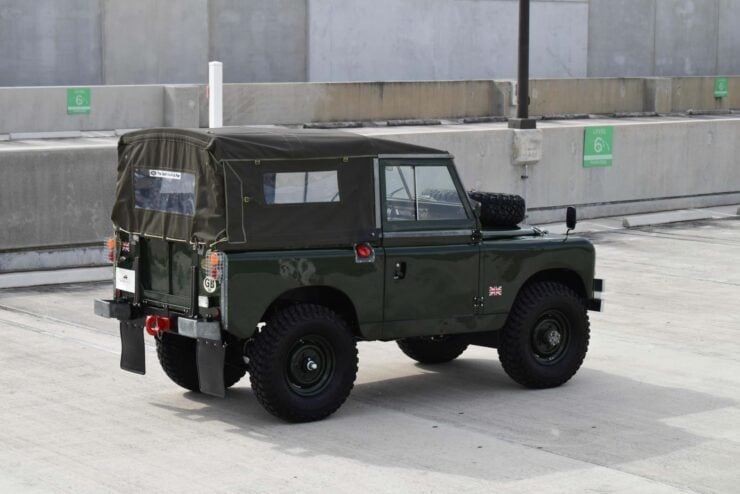



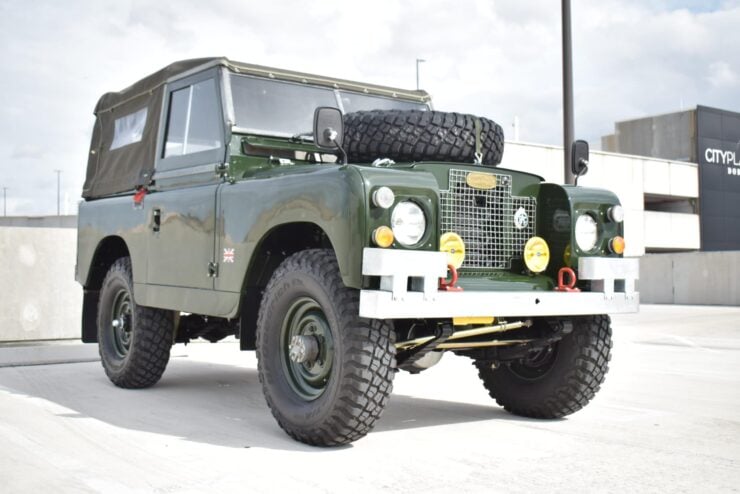







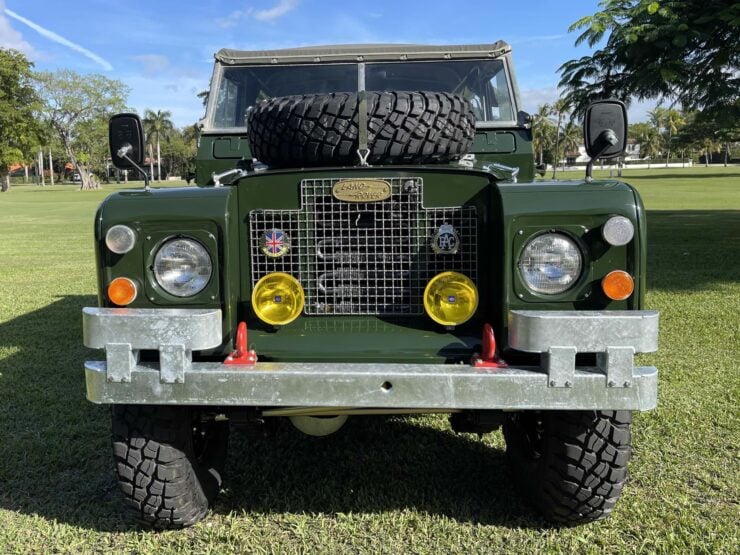




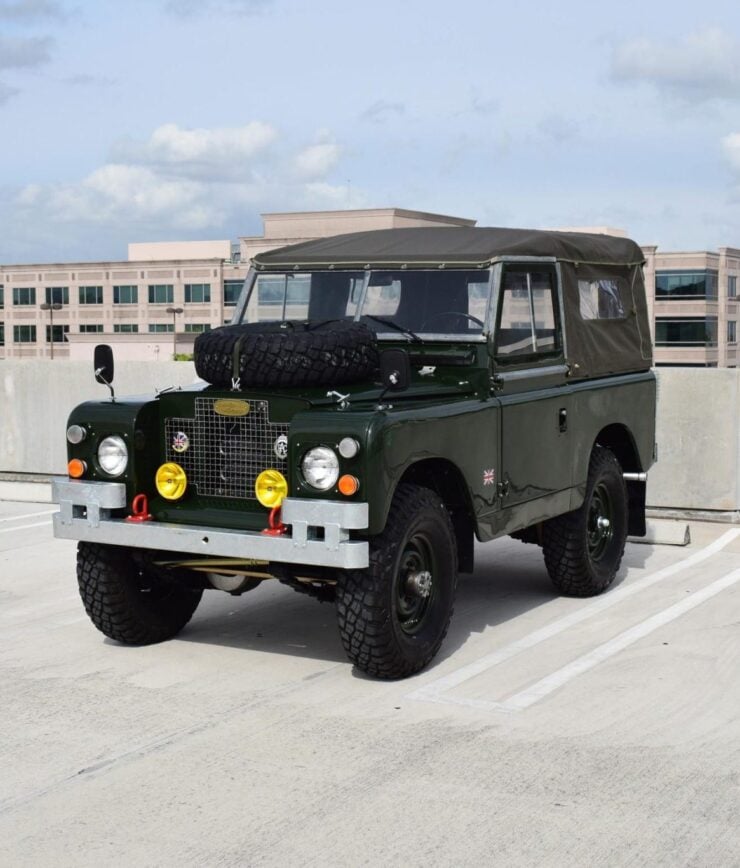
Images courtesy of Bring a Trailer




